Complete Solutions to Subjective of chapter NEWTON'S LAWS OF MOTION 1 of Class 11 book with complete answers and questions
| Class 11 | PHYSICS |
| Chapter | NEWTON'S LAWS OF MOTION 1 |
| CENGAGE PHYSICS | Subjective |
| Number Of Questions | 15 |
| Academic Year | 2023-24 |
A hot- air balloon consists of a basket, one passenger, and some carge. Let the total mass be M. Even though there is an upward lift force on the balloon, the balloon is initially acceleration downwards at a rate of `g//3`.
(a) Draw a free-body diagram for the descending balloon.
(b) Find the upward lift force in terms of the initial total weight Mg.
(c ) The passenger notices that he is heading straight for a waterfall and decides he needs to go up. What fraction of the total weight must he drop overboard so that the balloon accelerates upward at a rate of `g//2`? Assume that the upward lift force remains the same.
View SolutionA student tries to raise a chain consisting of three identical links. Each link has a mass of 300g. The three-piece chain is connected to a string and then suspended vertically, with the student holding the upper end of the string and pulling upward. Because of the student's pull, an upward force of 12 N is applied to the chain by the string.
(a) Draw a free-body diagram for each of the links in the chain and also for the entire-chain considered a single body.
(b) Use the results of part(a) Newton's laws to find (i) the acceleration of the chain and (ii) the force exerted by the top link on the middle link.
View SolutionTwo men of masses M and `M+m` start simultaneously from the ground and climb with uniform accelerations up from the free ends of a massless inextensible rope whick passes over a smooth pulley at a height h from the ground.
(a) Which man reaches the pulley first?
(b) If the mam who reaches first takes time t to reach the pulley, then find the distance of the second man from the pulley at this instant.
View SolutionIn fig. the man and the platform together weight 950N. The pulley can be treated as frictionless. Determine how hard the man has to pull on the rope to lift himself upward above the ground with constant velocity. If the weight of man is 550 N, what is the normal reaction between them?
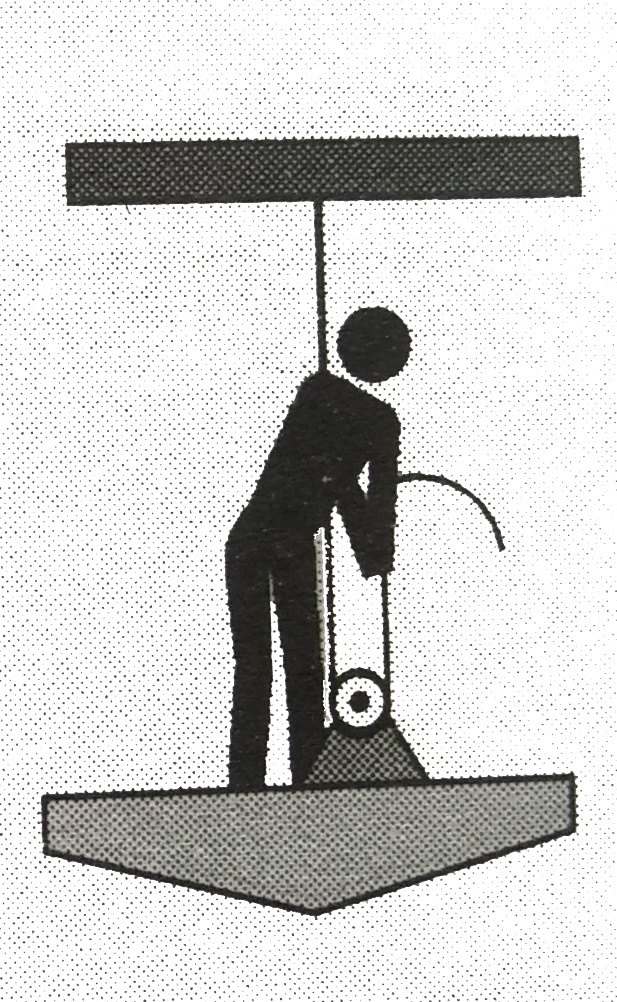
View SolutionThe monkey B shown in figure is holding on to the tail of the monkey A which is climbing up a rope. The masses of the monkeys A and B are 5 kg and 2kg respectively. If A can tolerate a tension of 30 N in its tail what force should it apply on the rope in order to carry the monkey B with it? Take g=10 ,m/`s^2`.
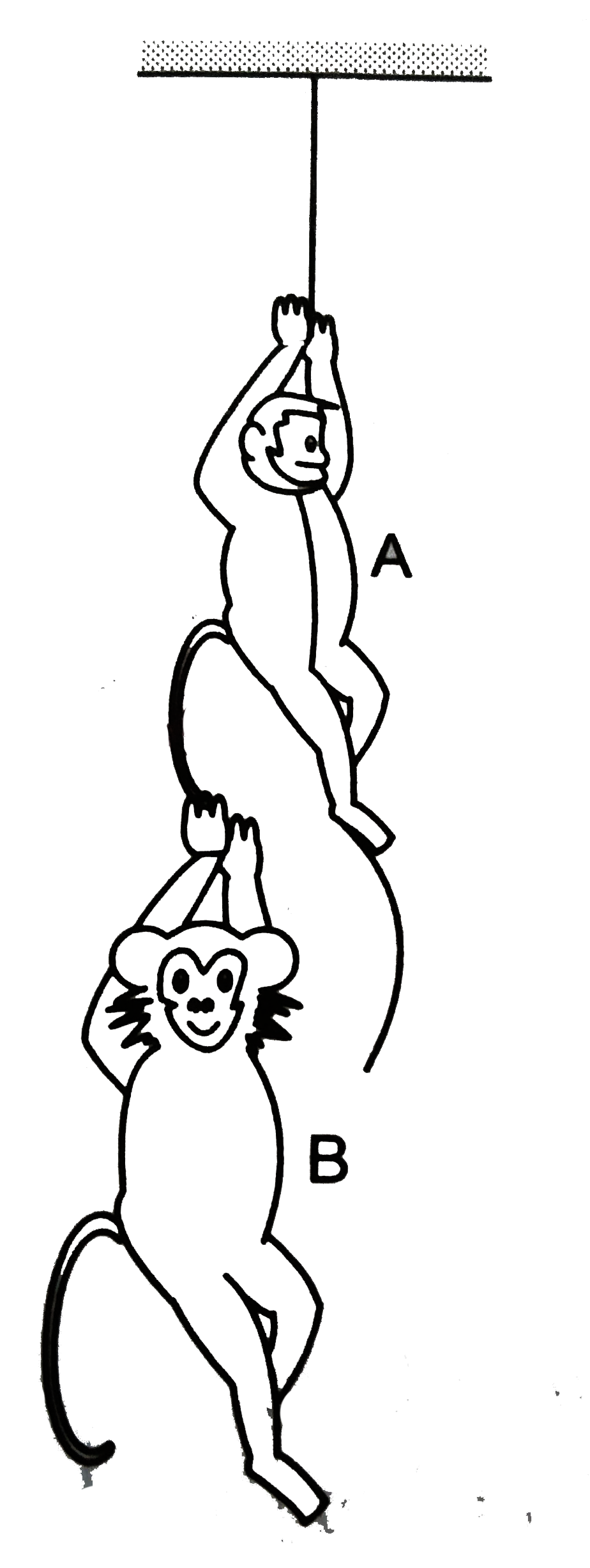
View SolutionA smooth ring A of mass m can slide on a fixed horizontal rod. A string tied to the ring passes over a fixed pulley B and carries a block C of mass `M(=2m)` as shown in figure. At an instant the string between the ring and the pulley makes an angle `theta` with the rod. (a). Show that, if the ring slides with a speed v, the block descends with speed `v cos theta`, (b). With what acceleration will the ring starts moving if the system is released from rest with `theta= 30^0`
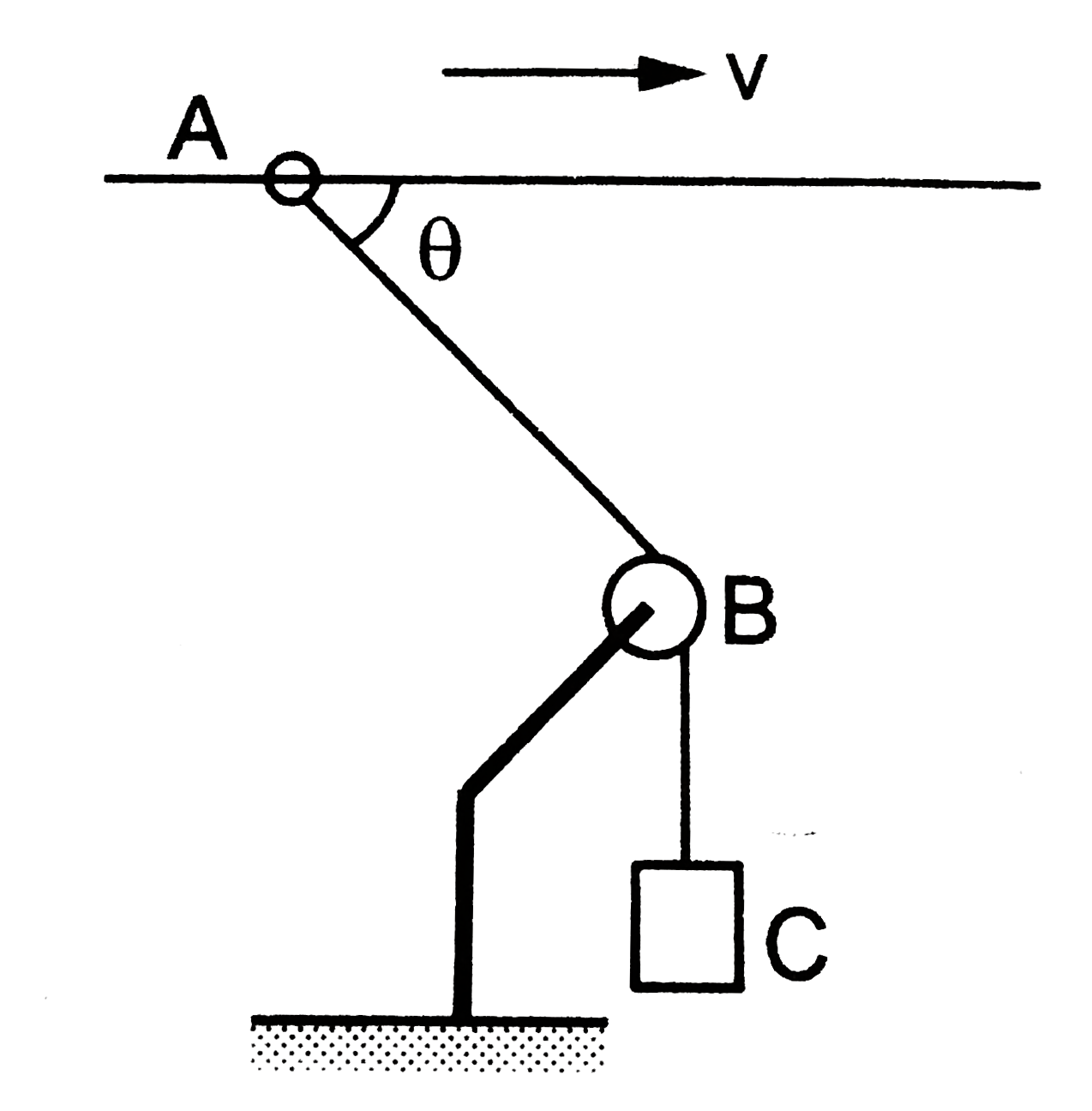
View SolutionA particle A of mass 2m is held on a smooth horizontal table and is attached to one end of an inelastic string which runs over a smooth light pulley at the edge of the table. At the other end of the string there hangs another particle B of mass m, the distance from A to the pulley is l. The particle A is then projected towards the pulley with velocity u.
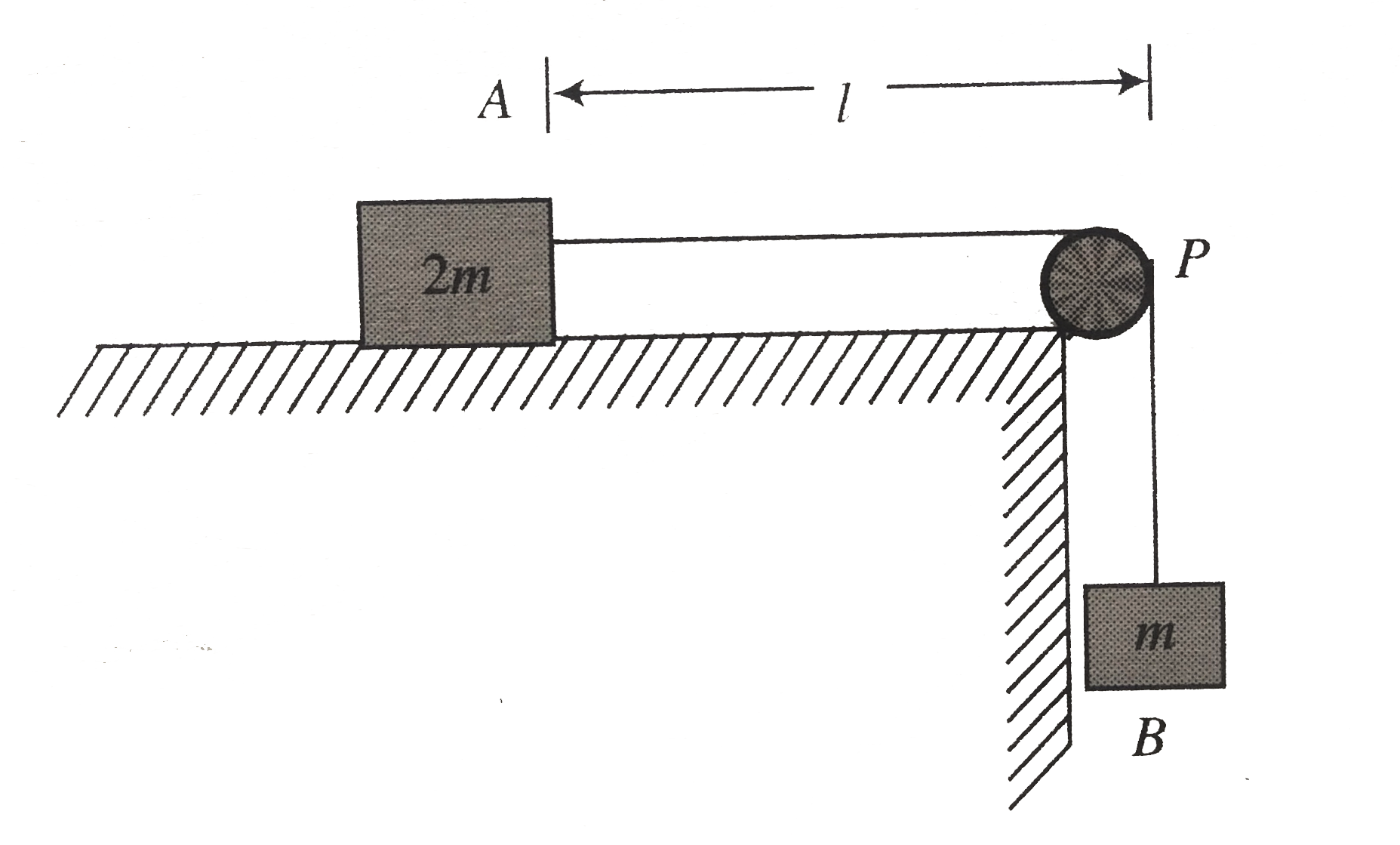
(a) Find the time before the string becomes taut, and shown that after the string becomes taut, the initial velocity of A and B is `4u//3`.
(b) Find the common velocity when A reaches the pulley (assume that B has not yet reached the ground).
View SolutionA smooth pulley A of mass `M_(0)` is lying on a frictionless table. A massless rope passes round the pulley and has masses `M_(1)` and `M_(2)` tied to its ends, the two portions of the string being perpendicular to the edge of the table so that the masses hang vertically. Find the acceleration of the pulley.
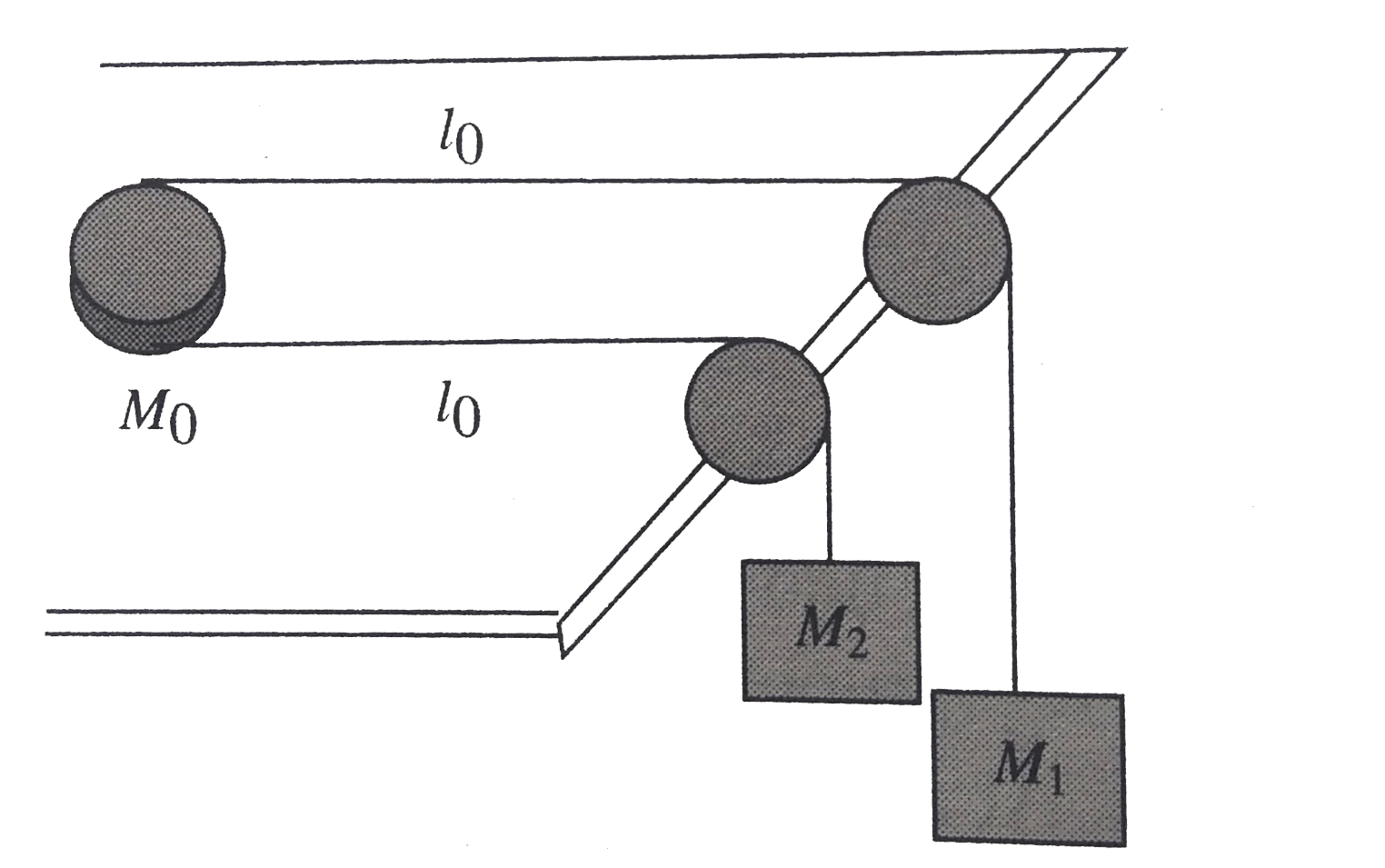
View SolutionThe upper surface of blokc C is horizontal and its right part is inclined to the horizontal at angle `37^(@)`. The mass of blocks A and B are `m_(1) = 1.4kg and m_(2)=5.5kg`, respectively. Neglect friction and mass of the pulley. Calculate acceleration a with which block C should be moved to the right so that A and B can remain stationary relative to it.
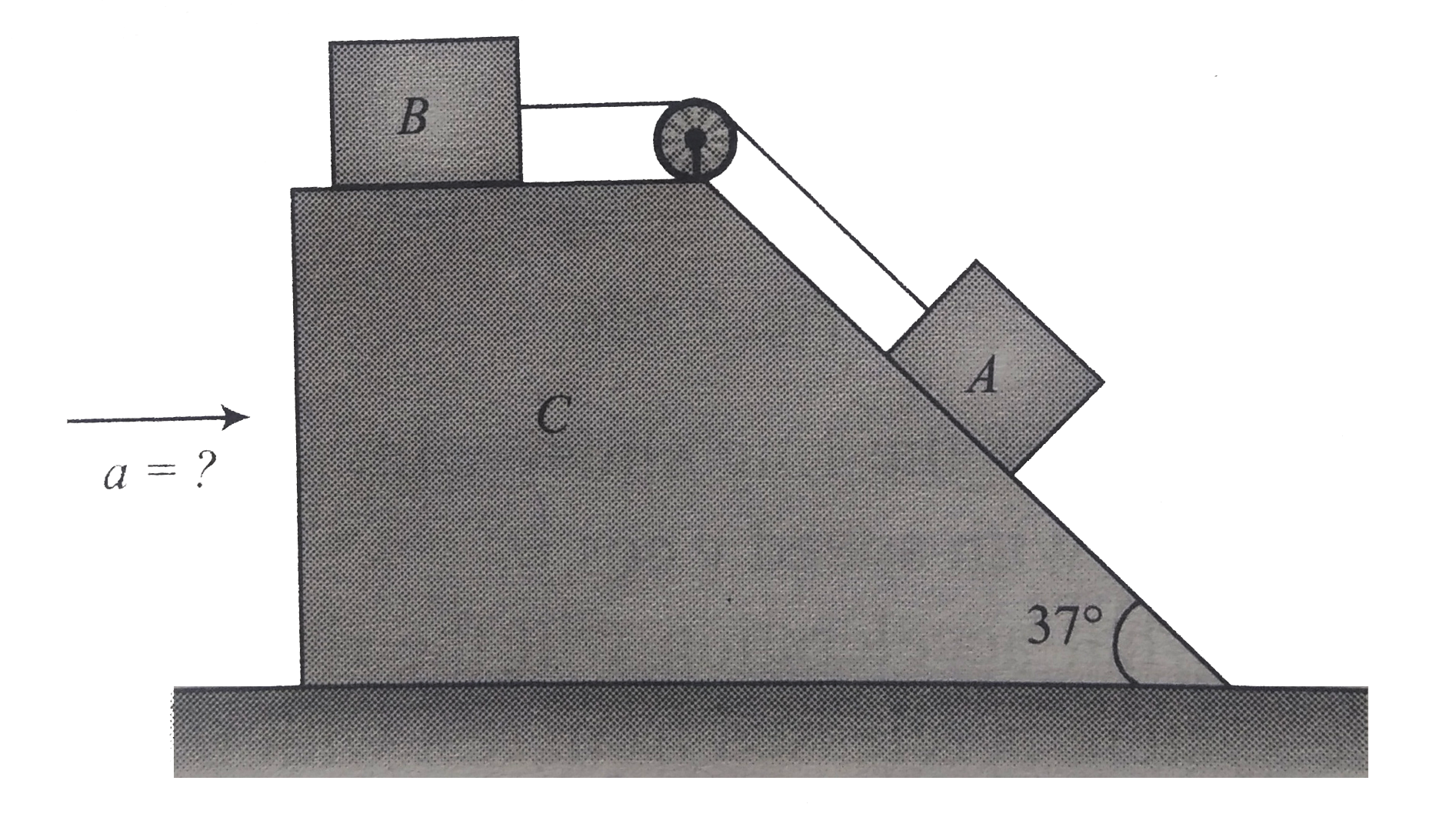
View SolutionIn the arrangement shown in fig., all pulleys are smooth and massless. When the system is released from the rest, acceleration of block 2 and 3 relative to 1 are `1 ms^(-2)` downwards and `5ms^(-2)` downwards, respectively. Acceleration of block 3 relative to 4 is zero.
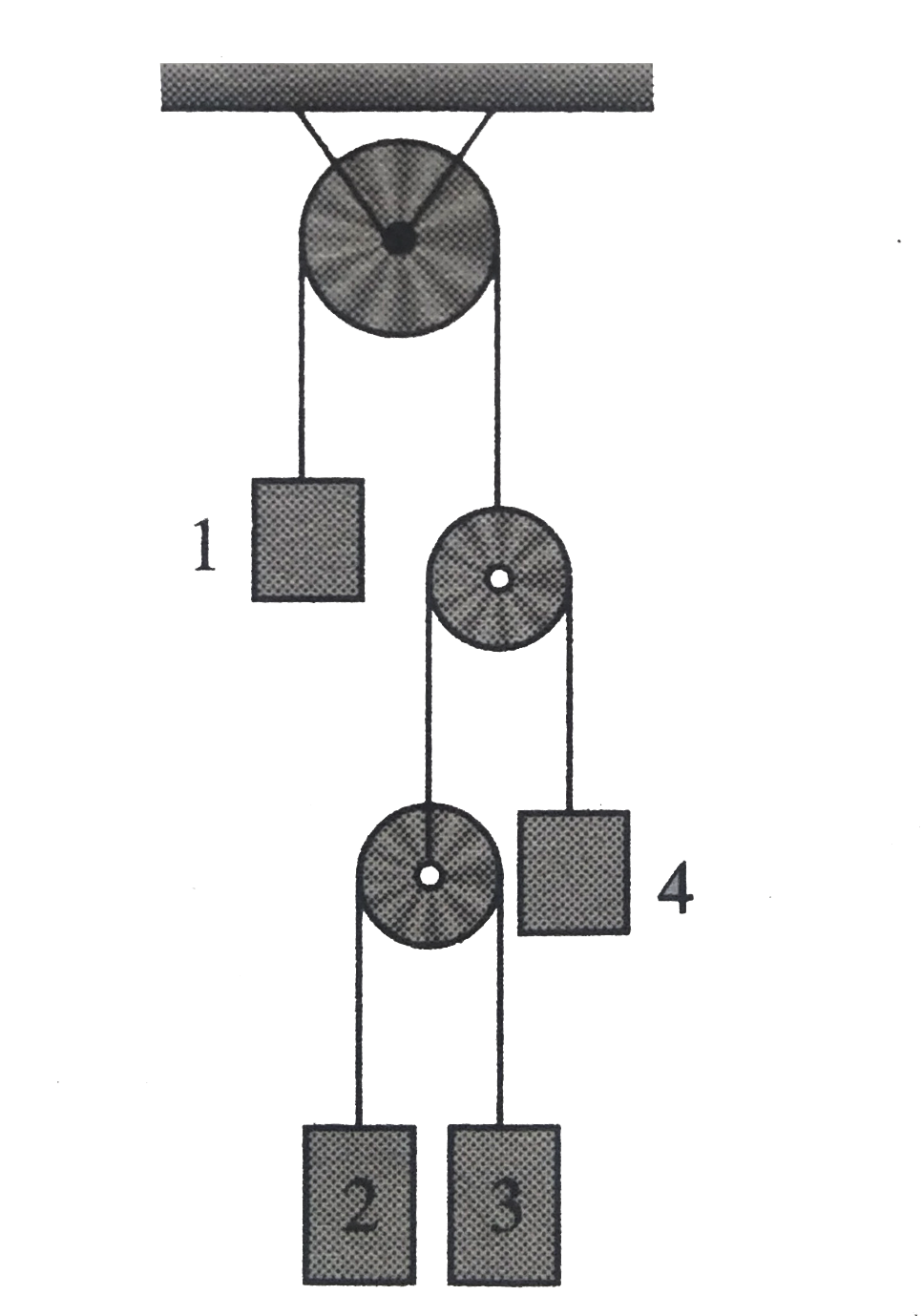
Find the absoulte acceleration of block 2.
View SolutionFigure shows a block of mass `m_(1)` sliding on a block of mass `m_(2)`, with `m_(1) gt m_(2)`. Find the
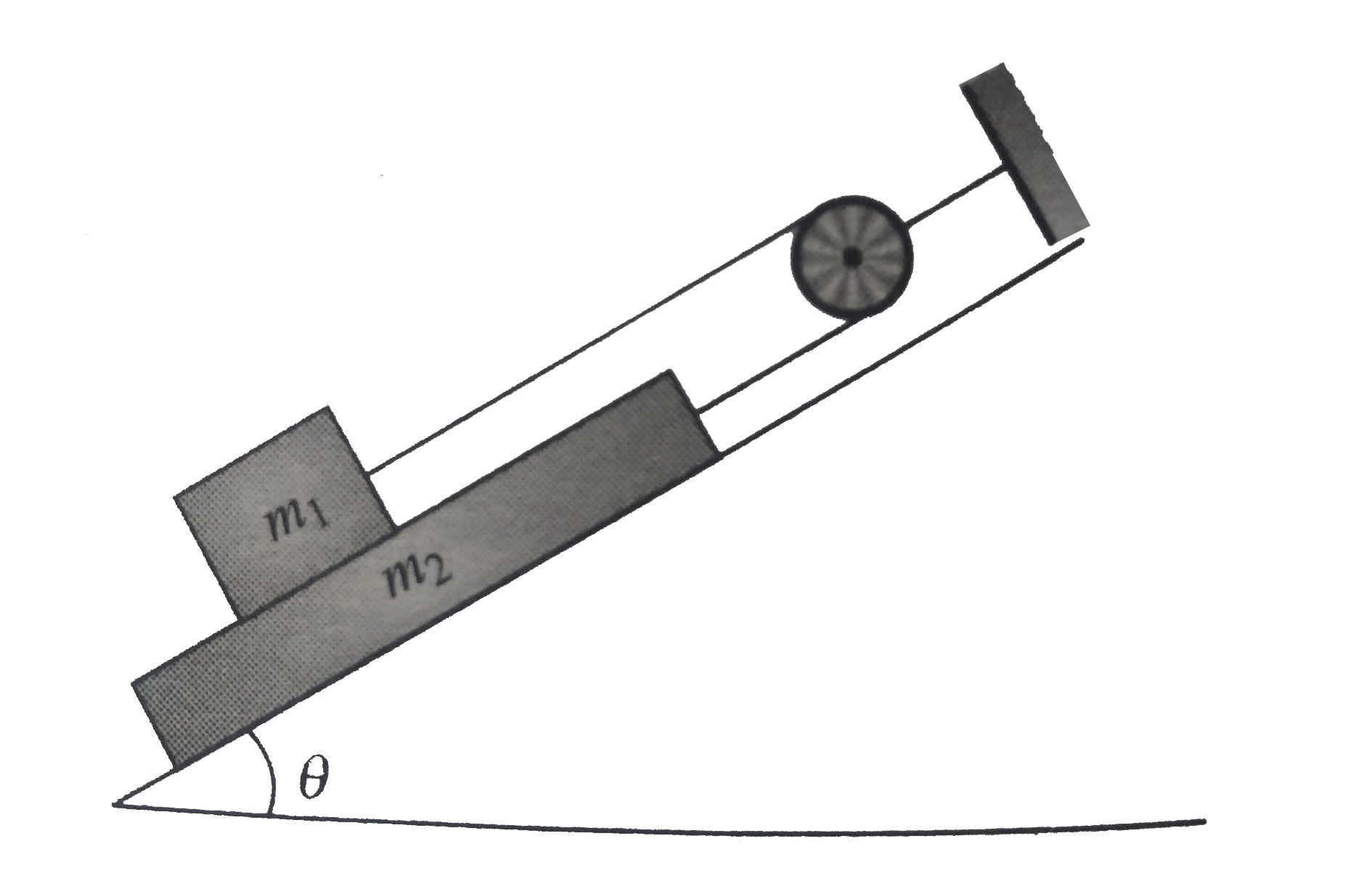
(a) acceleration of each block
(b) tension in the string
(c ) force exerted by `m_(1)` on `m_(2)`. ltbr. (d) force exerted by `m_(2)` on the incline.
View SolutionThe system shown in fig. is given an acceleration a towards left. Assuming all the surfaces to be frictionless, find the normal reactions applied by wedge on the sphere.
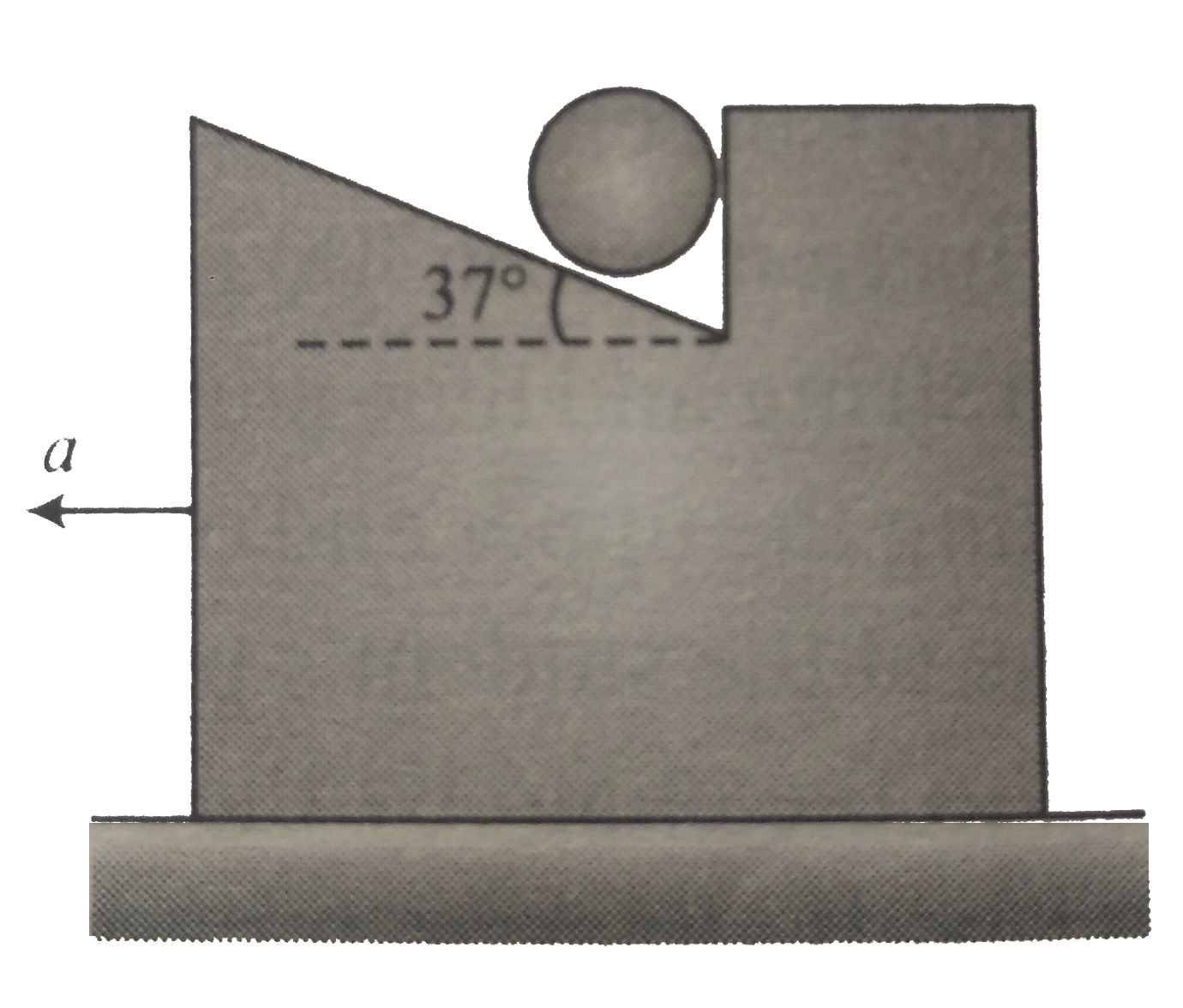
View SolutionIn the arrangement shown in fig. a wedge of mass `m_(3) =3.45 kg` is placed on a smooth horizontal surface. Small and light pulley is connected on its top edge, as shown. A light, flexible thread passes over the pulley. Two block having mass `m_(1)=1.3kg and m_(2) =1.5 kg` are connected at the ends of the thread.
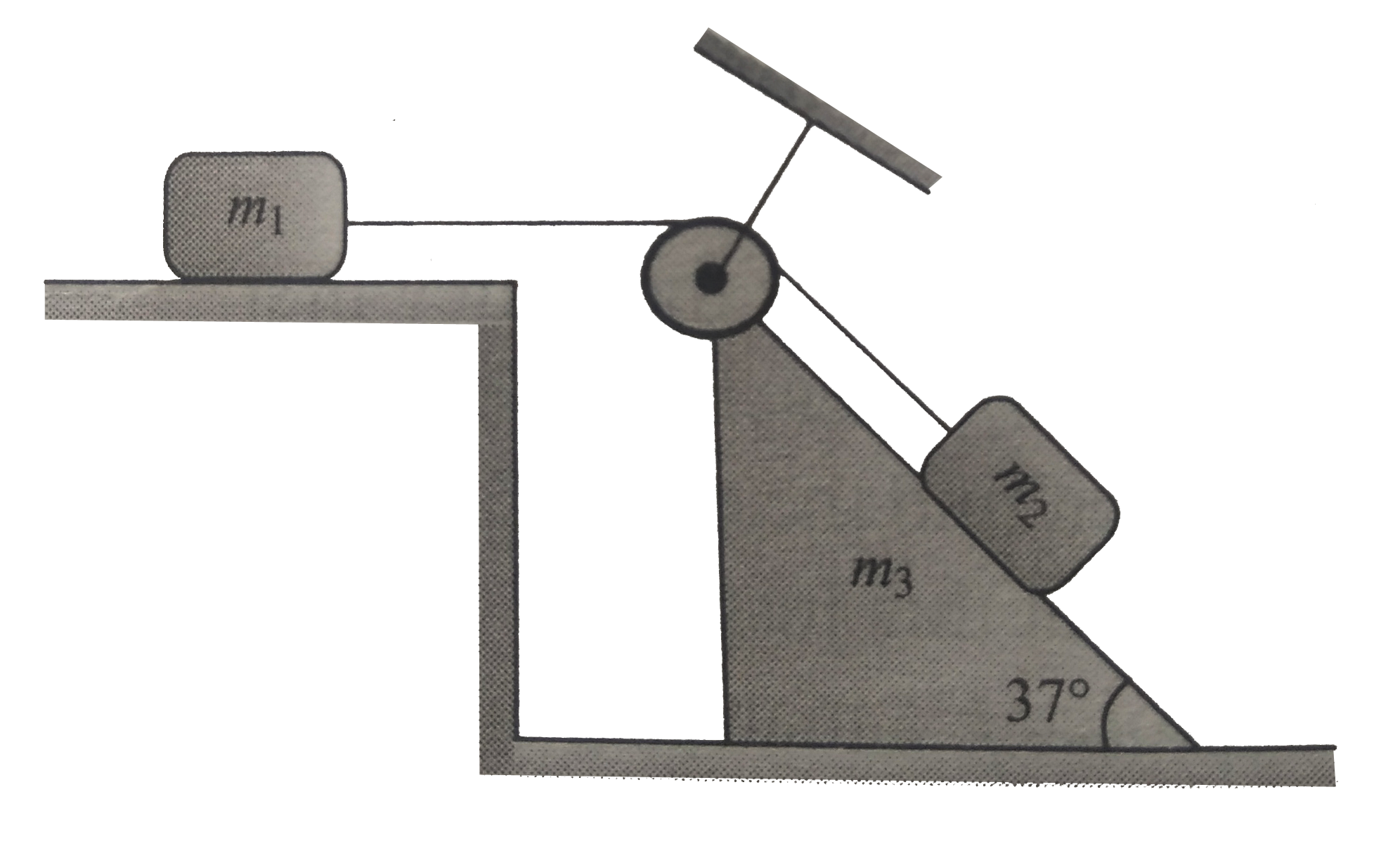
`m_(1)` is on smooth horizontal surface and `m_(2)` rests on inclined smooth surface of the wedge. the base length of wedge is 2m and inclination is `37^(@)`. `m_(2)` is initially near the top edge of the wedge.
If the whole system is released from rest, calculate:
(a) velocity of wedge when `m_(2)` reaches its bottom.
(b) velocity of `m_(2)` at that instant.
`(g=10ms^(-2))`.
View SolutionIn the system shown in fig., `m_(A)=4m`, `m_(B)=3m`, and `m_(c)=8m`. Friction is absent everywhere. String is inextensible and light. If the system is released from rest, then
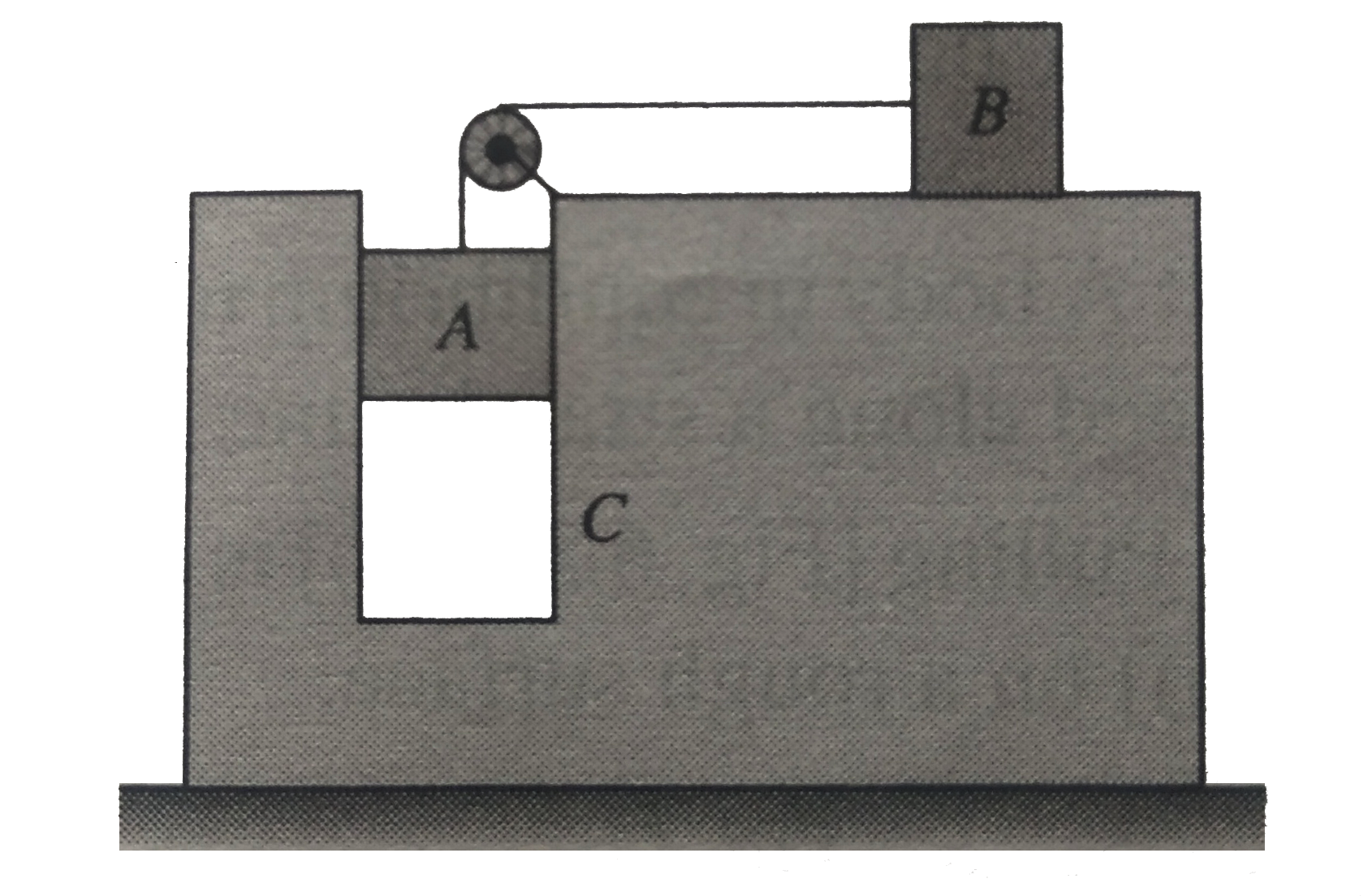
Acceleration of Block B is
View SolutionThe system shown in fig, is released from rest. Calculate the tension in the string and the force exerted by the string on the pulleys, assuming pulleys and strings are massless.
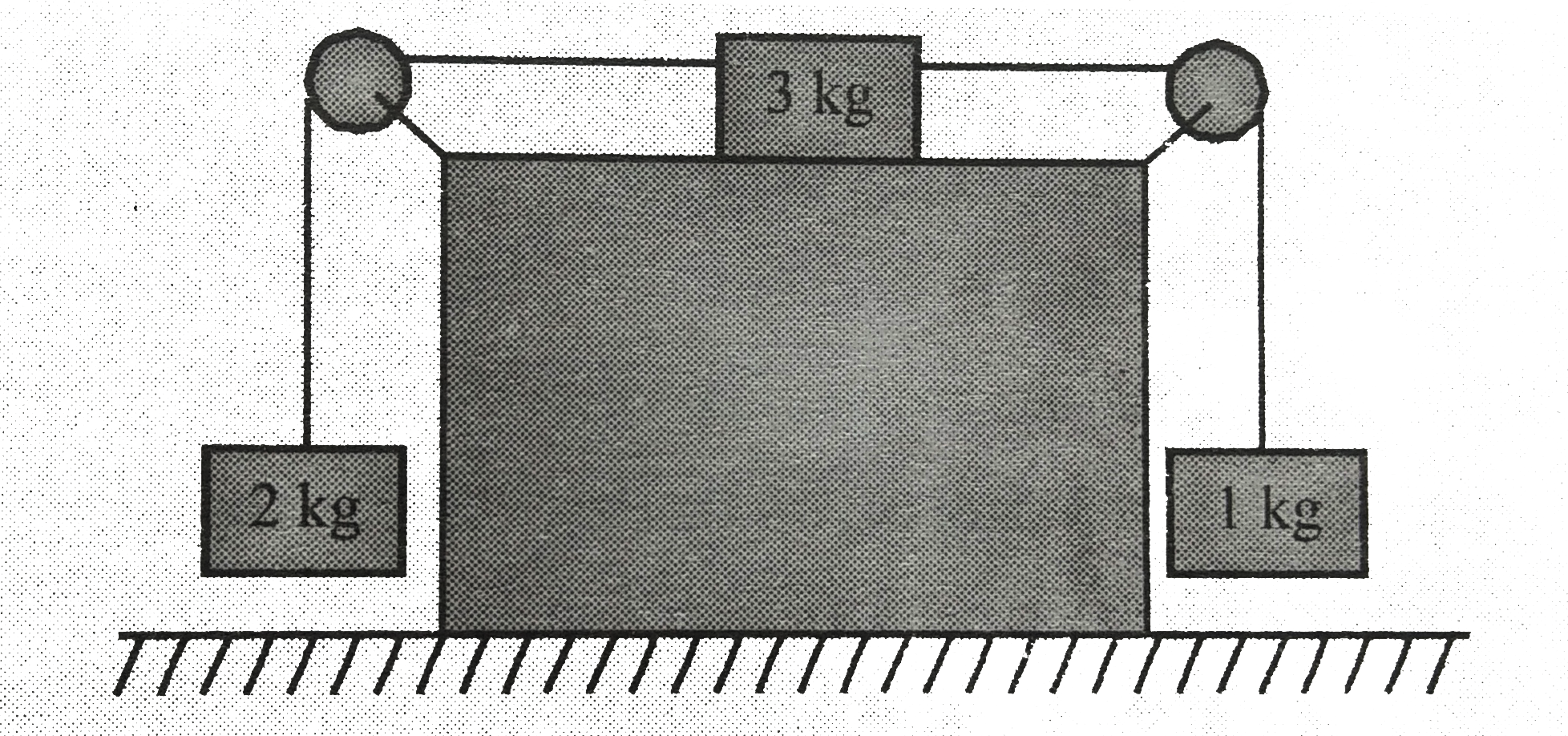
View Solution
Subjective questions and complete solutions for chapter NEWTON'S LAWS OF MOTION 1 of CENGAGE PHYSICS (HINGLISH) of Class 11